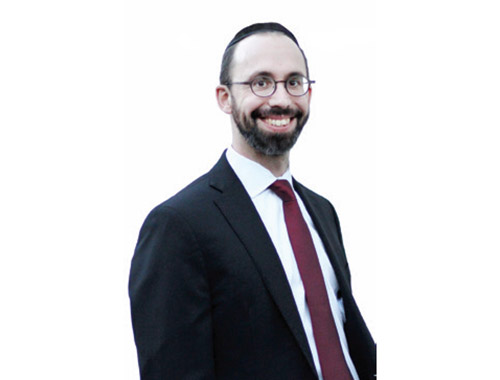
Naaseh v’nishma, “we will do and we will hear”; these are the famous words klal Yisrael said when Hashem offered us the Torah. The Gemara Shabbos (88a) tells us when klal Yisrael said these words, 600,000 angels descended from heaven and adorned the 600,000 Jews with two crowns each—one for the word naaseh and one for the word nishma. The Gemara also tells us that Hashem was very excited and asked, “Who revealed to my children the words the angels say?”—indicating klal Yisrael achieved an angelic level in their connection to Hashem by declaring “naaseh v’nishma.”
Surprisingly, this famous quote is said at the end of Parshas Mishpatim—not in Yisro, where we find the actual giving of the Torah. In Yisro, it says “Whatever Hashem says, naaseh [we will perform]” (Yisro 19:8). Only at the end of Parshas Mishpatim do the Jewish people say, “Whatever Hashem says, naaseh v’nishma [we will do and we will listen]” (Mishpatim 24:7). Could it be that Bnei Yisrael only said these words after the giving of the Torah?
This is a big dispute among the great commentators. Rashi says these verses at the end of Parshas Mishpatim indeed occurred on the fifth of Sivan shortly before Hashem gave the Torah. However, this begs an explanation regarding why the quote is not found in its proper order!
The Ramban and the Ibn Ezra argue that naaseh v’nishma relate to a different event that occurred on the eighth of Sivan, which was after the giving of the Torah and therefore was recorded in the correct order. But this begs an explanation as to why the famous words naaseh v’nishma were only declared after klal Yisrael received the Torah and not prior!
First, let’s understand the enormous significance of the statement made by these two words. The Beis Halevi, Rav Yosef Dov Halevi Soloveitchik, notes the Gemara emphasizes it’s the order of the statement that makes it important. Naaseh (to do) is said before the word nishma (to hear or understand). The reverse would be more expected and logical (first you hear, then you act), as that would mean the learning Torah is done in order to learn to perform the mitzvos. However, with nishma following naaseh, we can understand nishma as learning Torah just for the sake of Torah learning, not simply as a means to knowing about the mitzvos. That is why klal Yisrael merited two crowns—because there were two commitments: one for performance of mitzvos and the second for the study of Hashem’s Torah for its own sake.
The Netziv (Rav Naftali Tzvi Berlin) gives a different explanation. He says what was added here in declaring naaseh is the nishma—we will listen to something we have already heard and already done prior to the giving of the Torah, based on a sense of chesed (kindness) that was ingrained in us from our patriarchs. However, Hashem was creating a pact with klal Yisrael whereby chesed would be kindness based not just on a sense of morality, but rather based on the Torah itself, a heightened and more accountable form of chesed.
When Bnei Yisrael sinned with the golden calf, they lost their crowns (Gemara Shabbos 88a). The Midrash Rabbah (Shemos 27:9), however, tells us they only lost the one crown of naaseh because they failed in their actions. But the crown of nishma remained and still remains with us to this day. Rav Gedalia Schorr tells us the Midrash is teaching us that through diligence in the area of nishma (Torah study) we can restore the crown of naaseh!
Perhaps now we can better understand the order of naaseh v’nishma in Parshas Mishpatim, after the giving of the Torah. Whether it was said before or after Matan Torah, we can see that the Torah is emphasizing the importance of this new acceptance conveyed by nishma—an enhanced level of studying Torah and an enhanced level of chesed.
For the Beis Halevi, nishma conveys our commitment to diligent Torah study, and for the Netziv, nishma implies performing acts of kindness based on directives in the Torah rather than as a result of our own reasoning.
In our day-to-day life we can relate to the mitzvos as important rules for the functioning of Jewish society: mishpatim. This is very important! But Hashem is also teaching us that after we accept the mishpatim, there is a higher opportunity for commitment. By declaring “naaseh” [we will perform] followed by “nishma” [we will learn Torah for its own sake and perform an elevated level of chesed], we seize the opportunity for a passionate commitment that lovingly binds our deeds to our study of Hashem’s words.
By Rabbi Baruch Bodenheim
Rabbi Baruch Bodenheim is the associate rosh yeshiva of Passaic Torah Institute (PTI)/Yeshiva Ner Boruch. PTI has attracted people from all over northern New Jersey, including Teaneck, Bergenfield, Paramus, Rockaway and Fair Lawn. He initiated and continues to lead a multi-level Gemara learning program. Recently he has spread out beyond PTI to begin a weekly beis midrash program with in-depth chavrusa learning in Livingston and Springfield. This year he joined Heichal Hatorah in Teaneck as a Gemara iyun rebbe. His email is rb@ptiweb.org.










